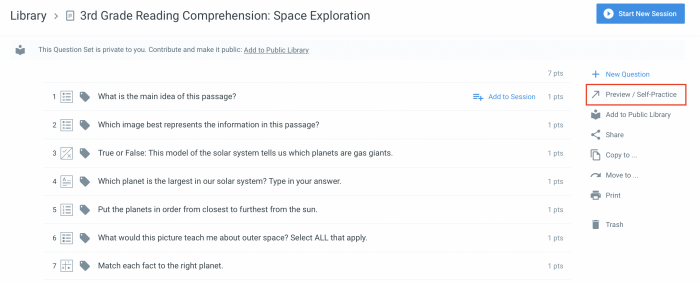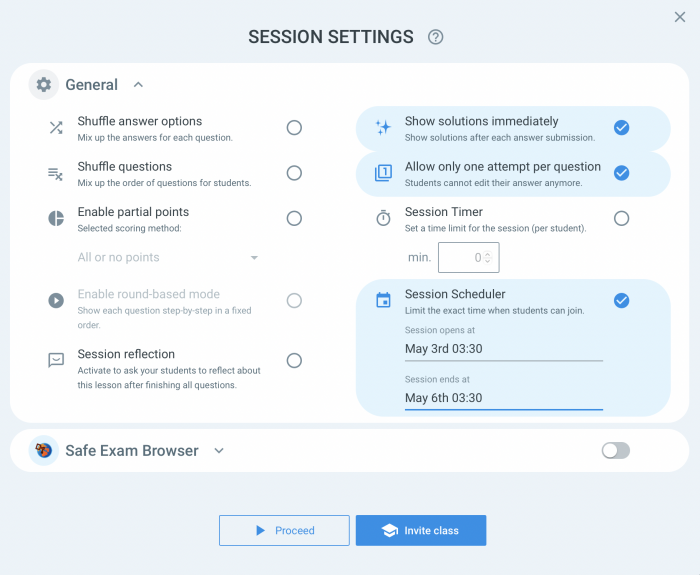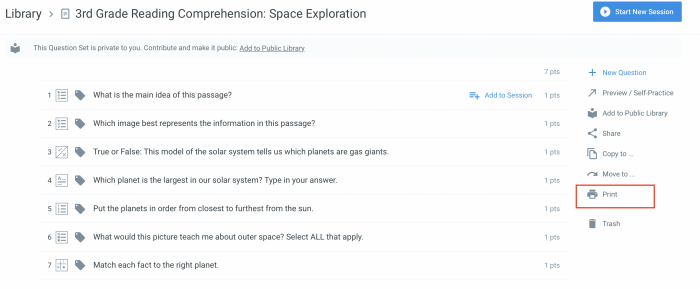4 Ideas to effectively teach with distance learning
Student & Teacher Requirements
– Both students and teachers can use any device that supports an internet browser (smartphones, tablets, computers, Chromebooks) (Learn more).
– Both students and teachers require access to the Internet – either via WiFi or mobile carrier network. (Learn more).
– Both students and teachers do not have to install any applications.
– While teachers need to register for an account, students do not have to register with an account. Students can access Classtime immediately with any nickname.
– Note: Classtime does offer a feature to print an entire question set for students, so you can also provide the material offline.
Instructional Applications – Practical Advice & Use Cases for Distance Learning
Self-Study and Ensuring Understanding for Home-based Learning
– Share your teaching material (PDFs, Classtime Assessments, YouTube videos, etc.) on Microsoft Teams, Google Drive or your school’s own Learning Management System (LMS) (“_blank” rel=”noopener noreferrer”>see video example).
– Classtime assessments can be integrated for self-practice with the Preview Link: Here, learners do not even have to enter a name and can practice and repeat your tasks as often as they would like to. Simply pick a Question Set, click on Preview, and share the link with your students:

Alternatively, if you want to also collect real-time insights of your learners’ progress, you can create a new Session and share the Session Code (e.g. via link). We recommend selecting the Session Settings “Show solutions immediately” and “Allow only one attempt” to ensure that every learner immediately receives feedback. You can also schedule exact start and end times of your Sessions. Afterwards, all results can be discussed personally via video conferencing.

Group Work and Ensuring Understanding with Mini-Assessments
Build expert student groups and give them a topic to research and create teaching materials about it, e.g. within your LMS or Google Drive. Let students share their material with other student and learn from each other’s work. Then, check their understanding with a mini-assessment across all topics.
Online Classroom Instruction
Use your favorite video conferencing tool to share a presentation that is enhanced with Classtime assessments with your students (” target=”_blank” rel=”noopener noreferrer”>see video example). Due to the Coronavirus outbreak, popular conferencing tools are now also offering FREE access to educators (Google Hangouts, Skype, Zoom). You can screen share your Session Dashboard, a Preview Link of your Question Set to discuss questions, or even launch a Collaborative Challenge for you students to engage with (learn more)! This is a powerful way to mitigate one of the biggest challenges of distance learning: student loneliness!
Distribute Homework Online
Create homework with Classtime by yourself or use existing content. Your questions can then be shared with links via email or your school’s LMS for two use cases:
1. As a preview link for self-practice. (See more above.)
2. As a Session to gain insight into every learner’s understanding. If you want, you can also specify start and end times:

Additional practical advice
– Stay connected: let students use smartphones to participate. Not all students have equal access to internet and devices, so the higher availability of smartphones usually helps. Let students know that they can immediately use their smartphones to join from wherever they want – no app installations required.
– If students cannot access the internet from home or do not have any devices, you can print your question sets. If there’s a package they can pick up or if they do have a way to print material, simply generate a PDF with our print feature. Download an example here: 5th Grade NGSS Assessment Practice: Space

– Richer content: add more media and links to your questions. Add YouTube videos or links in your questions to referencing to additional resources.
– Shared Folders. Divide the workload and get up to speed faster. With our upcoming shared libraries, teacher teams can remotely work on question sets together.


Aaron M. Kollie
April 7, 2020 at 3:55 pmThanks so much about what I have just learned.